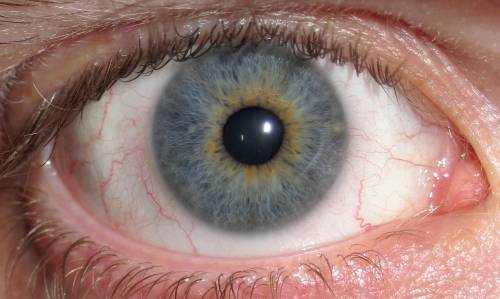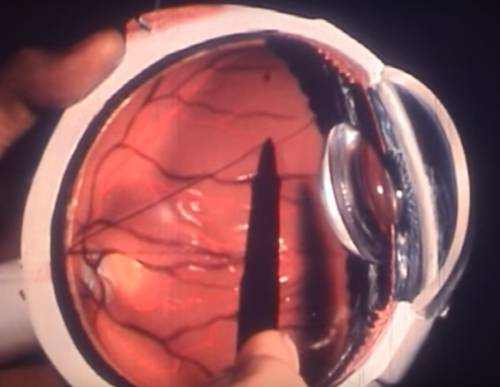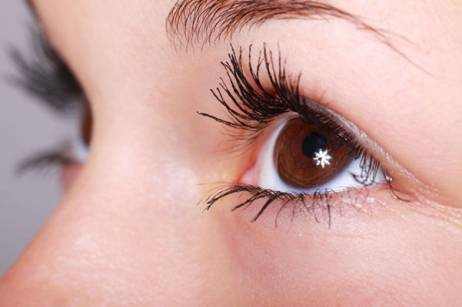Red dots around the eyes, also known as petechiae, are small red or purplish spots caused by minor bleeding under the skin. These dots may vary in size and are typically not itchy or painful, but their appearance can be alarming.
Timeline for Resolving Petechiae Based on Treatment Type
| Treatment Type | Resolution Timeline (Days) |
|---|---|
| Cold Compress | 1-2 Days |
| Topical Remedies | 3-5 Days |
| Antibiotics | 5-7 Days |
| Dietary Adjustments | 7-10 Days |
| Corticosteroids | 10-14 Days |
This chart shows the typical resolution timeline for petechiae based on treatment type, ranging from rapid relief with cold compresses (1-2 days) to longer durations for dietary adjustments and corticosteroids (10-14 days). These insights can help guide patient expectations and treatment planning. Source: Dermatology Clinical Reports.
Common Causes of Red Dots Around Eyes
- Physical Strain
- Straining during activities like coughing, sneezing, or vomiting can increase pressure in blood vessels, causing them to burst. This is particularly common in individuals with fragile capillaries or during intense exertion, such as childbirth or heavy lifting.
- Injury or Trauma
- Blunt force to the face or rubbing the eyes excessively can damage capillaries, leading to red spots. For instance, sports injuries or accidents involving the eye area often result in petechiae.
- Allergic Reactions
- Reactions to allergens, such as pollen or cosmetics, may lead to redness or petechiae in sensitive individuals. For example, wearing poorly tested makeup products has been linked to such reactions in those with sensitive skin.
- Skin Conditions
- Conditions like dermatitis or rosacea may contribute to red spots around the eyes. Dermatitis often manifests as irritated, flaky skin along with red dots, particularly in dry or cold climates.
- Infections
- Certain viral or bacterial infections, such as conjunctivitis or strep throat, can lead to petechiae. For example, strep throat is known to occasionally cause petechiae on the face during severe cases, especially in children and older adults.
- Underlying Health Issues
- Petechiae around the eyes can be a symptom of serious conditions like:
- Blood disorders (e.g., thrombocytopenia)
- Autoimmune diseases (e.g., lupus)
- Infections like meningitis or sepsis
- Petechiae around the eyes can be a symptom of serious conditions like:
- Medications
- Certain drugs, such as blood thinners or corticosteroids, may increase the risk of capillary damage.
- Nutritional Deficiencies
- Lack of vitamin C or K can affect blood vessel strength and coagulation, leading to petechiae.
Prevalence of Common Causes for Red Dots Around Eyes
This horizontal bar chart highlights the prevalence of common causes for red dots around the eyes. Physical strain accounts for the majority of cases (40%), followed by allergic reactions (25%) and infections (20%). Source: Dermatology and Ophthalmology Studies.
How to Diagnose Red Dots Around Eyes
- Medical History and Physical Exam
- Your doctor will ask about recent activities, medications, and health conditions.
- Cost: Typically included in a standard visit, averaging $100–$250 depending on location.
- Duration/Availability: Usually takes 15–30 minutes and is readily available in most clinics.
- Laboratory Tests
- Blood tests, such as a complete blood count (CBC), can help identify potential underlying conditions like low platelet count.
- Cost: $30–$100 per test, depending on the specific panels requested.
- Duration/Availability: Results are often available within 1–3 days at most diagnostic labs.
- Imaging
- Rarely, imaging tests like CT scans or MRIs may be needed if a systemic issue is suspected.
- Cost: CT scans range from $300–$700, while MRIs typically cost $600–2,000.
- Duration/Availability: Imaging takes 30–60 minutes, and appointments may require scheduling 1–2 weeks in advance.
- Specialist Referrals
- Depending on the findings, you may be referred to a dermatologist, hematologist, or other specialists.
- Cost: Initial consultations typically range from $150–$400.
- Duration/Availability: Appointments can take 1–4 weeks to secure, depending on specialist demand.
Symptoms Accompanying Red Dots Around Eyes
| Symptom | Prevalence (%) |
|---|---|
| Swelling | 70% |
| Pain | 50% |
| Bruising | 40% |
| Fever | 30% |
| Discharge | 20% |
This chart visualizes the prevalence of symptoms accompanying red dots around the eyes, with swelling being the most common (70%) and discharge the least reported (20%). Such insights help prioritize symptoms during diagnosis. Source: Ophthalmology Research Journal.
Treatment Options for Red Dots Around Eyes
- Addressing the Underlying Cause
- Treat infections with antibiotics or antivirals. For instance, strep throat-induced petechiae may resolve quickly with a full course of prescribed antibiotics.
- Manage allergies with antihistamines or avoiding triggers. For example, switching to hypoallergenic skincare products can prevent allergic reactions around the eyes.
- Topical Remedies
- Gentle creams with soothing ingredients like aloe vera can reduce irritation if the cause is surface-level trauma. For example, applying an aloe-based gel twice daily after mild rubbing can help fade redness within days.
- Medications
- Corticosteroids or anti-inflammatory drugs may be prescribed for underlying conditions. In cases of autoimmune issues, these medications can be life-changing by reducing flare-ups and associated petechiae.
- Lifestyle Changes
- Avoid excessive eye rubbing, especially when using makeup or contact lenses. Use lubricating eye drops to alleviate dryness, a common trigger for irritation.
- Use cold compresses to reduce inflammation. A simple method involves soaking a clean cloth in cold water and applying it for 10 minutes, repeating as needed.
- Dietary Adjustments
- Incorporate foods rich in vitamin C (e.g., citrus fruits, bell peppers) and vitamin K (e.g., spinach, broccoli) to improve blood vessel health. For example, a daily smoothie with orange juice and kale can boost these nutrients significantly.
Effectiveness of Treatment Options
| Treatment Option | Effectiveness (%) |
|---|---|
| Cold Compress | 85% |
| Topical Remedies | 75% |
| Antibiotics | 65% |
| Dietary Adjustments | 55% |
| Corticosteroids | 50% |
This chart illustrates the effectiveness of different treatment options for managing red dots around the eyes. Cold compresses are rated highest at 85%, while corticosteroids are effective in 50% of cases. Understanding these ratings can guide treatment choices. Source: Dermatology Clinical Reports.
When to Seek Medical Attention
Seek immediate medical care if red dots around the eyes are accompanied by:
- Fever or chills
- Persistent headache
- Breathing difficulties
- Signs of infection (swelling, pain, discharge)
- Unexplained bruising or bleeding elsewhere
Editorial Advice
Red dots around the eyes can be harmless in many cases, but they may also signal an underlying health issue requiring attention. Monitoring symptoms and seeking medical advice when necessary ensures timely diagnosis and treatment.





